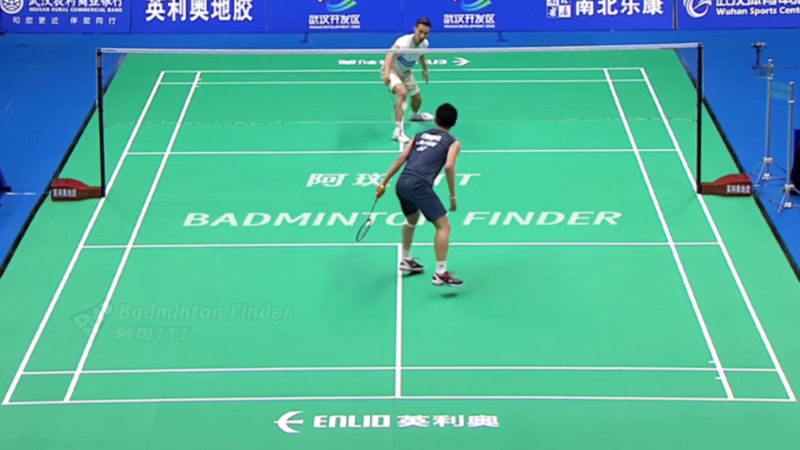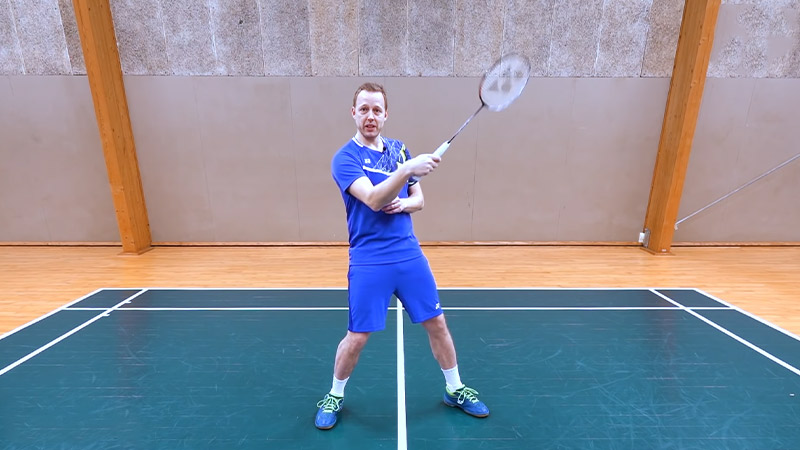Badminton, a sport enjoyed by people of all ages and skill levels, offers a wealth of physical, mental, and social benefits. From its fast-paced rallies to strategic gameplay, badminton goes beyond being just a recreational activity.
In this article, we delve into the various advantages that playing badminton can bring to your life.
Whether you’re a seasoned player or considering picking up a racket for the first time, read on to discover the incredible benefits that this sport has to offer. So, stay focused.
Is Playing Badminton Good for Health?
Playing badminton offers numerous exercise benefits that contribute to overall health and well-being. This dynamic sport engages various muscle groups, promoting cardiovascular fitness, muscular strength, and endurance.
The fast-paced nature of badminton enhances agility, coordination, and reflexes, while the intermittent bursts of intense movement improve anaerobic capacity. Badminton exercise benefits are far-fledged.
Regular participation in badminton helps burn calories, aids in weight management, and supports bone health by enhancing bone density due to the weight-bearing nature of the activity.
Additionally, the social aspect of playing badminton can boost mental health, reducing stress and promoting a positive mood. Overall, badminton is a fun and effective way to stay physically active and enjoy a range of health benefits.
Health Benefits of Playing Badminton

Playing badminton offers a plethora of health benefits, making it a fantastic sport for individuals of all ages and fitness levels.
From physical to mental advantages, here’s a comprehensive look at why engaging in badminton can significantly contribute to your overall well-being:
Cardiovascular Fitness
Badminton is an excellent cardiovascular workout. The quick and intense rallies elevate your heart rate, improving the efficiency of your heart and enhancing blood circulation. This, in turn, helps lower the risk of heart disease, strokes, and hypertension.
Muscular Strength and Endurance
The sport involves a combination of upper and lower body movements. Swinging the racket, jumping, and lunging engage muscles in the arms, shoulders, legs, and core. This builds both muscular strength and endurance, promoting a balanced physique.
Flexibility and Agility
The rapid changes in direction and the need to respond quickly to the shuttlecock’s movement enhance your agility, flexibility, and reflexes. This not only improves your badminton performance but also helps prevent injuries in daily activities.
Weight Management
The high-energy expenditure during badminton sessions aids in burning calories and shedding excess weight. Regular participation can contribute to weight management and assist in achieving or maintaining healthy body weight.
Bone Health
Badminton is a weight-bearing activity, which means it promotes bone health by increasing bone density. This is particularly important in preventing conditions like osteoporosis, especially as we age.
Improved Balance and Coordination
The dynamic nature of badminton requires you to shift your weight, change directions, and maintain your balance. These actions enhance proprioception (body awareness) and coordination, benefiting your overall motor skills.
Enhanced Mental Focus
Badminton demands quick decision-making and strategic thinking. Engaging in the sport regularly sharpens your mental acuity, boosting your ability to concentrate and make split-second judgments.
Stress Reduction
Physical activity, including playing badminton, triggers the release of endorphins – the body’s natural mood elevators. This can help alleviate stress, anxiety, and depression, promoting a positive mental state.
Social Interaction
Badminton is often played in pairs or teams, fostering social interaction and camaraderie. This social aspect contributes to your mental well-being, reducing feelings of isolation and enhancing your overall quality of life.
Lifelong Activity
Badminton is a sport that can be enjoyed throughout one’s life, from childhood to old age. Its versatility in terms of intensity levels allows people of various fitness levels to participate, making it an inclusive and sustainable form of exercise.
Boosted Immune System
Regular physical activity, like playing badminton, can bolster your immune system, making you more resistant to infections and illnesses.
Posture Improvement
The varied movements and exercises in badminton help strengthen the muscles responsible for maintaining proper posture. This can alleviate or prevent back and neck pain caused by poor posture.
Incorporating badminton into your routine can lead to a holistic improvement in your physical and mental well-being.
It’s important to start at a comfortable pace, gradually increasing intensity, and always prioritize safety by warming up, staying hydrated, and using appropriate equipment.
Mental Benefits of Badminton

Engaging in badminton not only provides physical fitness but also offers a range of mental benefits that contribute to your overall well-being. Here are some of the key mental advantages of playing badminton:
Stress Relief
Physical activity, including badminton, triggers the release of endorphins, which are natural mood enhancers. These “feel-good” chemicals help reduce stress, anxiety, and tension, promoting a sense of relaxation and well-being.
Improved Concentration
Badminton requires focus and quick decision-making. Tracking the shuttlecock, predicting your opponent’s moves, and strategizing for the game enhance your ability to concentrate and make split-second judgments.
Enhanced Cognitive Function
The combination of physical activity and mental engagement in badminton stimulates brain function. This can lead to improved cognitive abilities, such as memory, problem-solving, and creativity.
Boosted Self-Confidence
As your badminton skills improve over time, your self-confidence also grows. Successfully executing shots, winning matches, and achieving personal goals on the court can positively impact your self-esteem.
Mood Elevation
Regular participation in badminton can help alleviate feelings of depression and anxiety. Social interactions, physical exertion, and accomplishment of goals all contribute to a more positive mood.
Mind-Body Connection
The focus required to coordinate your movements, respond to the shuttlecock’s trajectory, and execute shots creates a strong mind-body connection. This can lead to improved body awareness and proprioception.
Stimulation of Neurotransmitters
Playing badminton stimulates the release of various neurotransmitters, such as dopamine and serotonin. These neurotransmitters play a crucial role in regulating mood, pleasure, and motivation.
Strengthened Resilience
Overcoming challenges and setbacks during matches or practice sessions can help build mental resilience. This ability to bounce back from setbacks extends beyond the court, positively impacting your approach to life’s challenges.
Social Interaction
Badminton is often played in pairs or teams, providing opportunities for social interaction and building connections with others who share similar interests. These social interactions contribute to a sense of belonging and community.
Stimulating Dopamine Release
Engaging in physical activity like badminton can lead to the release of dopamine, a neurotransmitter associated with pleasure and reward. This can lead to a sense of enjoyment and satisfaction after playing.
Reduced Rumination
Playing badminton can help shift your focus away from negative or repetitive thoughts. The intense gameplay requires your full attention, helping to reduce rumination and promoting mindfulness.
Time for Mindfulness
Badminton can serve as a form of mindfulness practice. While on the court, you’re fully engaged in the present moment, leaving behind worries and distractions.
Incorporating badminton into your routine can significantly contribute to your mental well-being. Whether you’re playing for recreation or competition, the mental benefits of badminton can have a positive impact on your overall quality of life.
When Badminton Is Not Good for Health?
While badminton is generally a beneficial and enjoyable activity for most people, there are certain situations and conditions where playing badminton may not be suitable for optimal health. Here are some scenarios in which caution or avoidance of badminton is recommended:
Existing Injuries
If you have existing injuries, particularly those affecting your joints, muscles, or bones, playing badminton can exacerbate the condition and hinder the healing process. It’s crucial to consult a medical professional before resuming play if you have any ongoing injuries.
Cardiovascular Conditions
Individuals with severe cardiovascular conditions such as heart disease, recent heart surgery, or a history of heart attacks should consult their doctors before engaging in strenuous physical activities like badminton, as the intensity could put excess strain on the heart.
Respiratory Issues
If you have respiratory problems like asthma or chronic obstructive pulmonary disease (COPD), the rapid and intense physical exertion in badminton could trigger breathing difficulties. Consulting a doctor is advisable before starting such activities.
Joint Problems
Individuals with joint conditions like arthritis may experience increased pain and discomfort due to the high-impact movements involved in badminton. Low-impact exercises might be a more suitable choice.
Uncontrolled High Blood Pressure
Intense physical activity, like badminton, can lead to a temporary spike in blood pressure. Individuals with uncontrolled high blood pressure should exercise caution and seek medical advice before engaging in vigorous activities.
Pregnancy
Pregnant women should avoid activities with a high risk of falls or injury, such as badminton. Engaging in gentler forms of exercise, like prenatal yoga or walking, is generally more advisable during pregnancy.
Recent Surgeries
Individuals who have undergone recent surgeries, especially those involving joints or bones, should follow their doctor’s recommendations regarding physical activity. Prematurely engaging in intense exercises could impede the healing process.
Severe Obesity
For individuals with severe obesity, high-intensity movements in badminton might strain joints and pose health risks. Starting with low-impact exercises and gradually progressing under medical supervision is a safer approach.
Heat and Humidity
Playing badminton in extreme heat and humidity can lead to heat-related illnesses such as dehydration, heat exhaustion, or even heatstroke. It’s important to stay hydrated, take breaks, and play in a comfortable environment.
Lack of Proper Warm-up
Failing to warm up adequately before playing badminton can increase the risk of injury. Proper stretching and warm-up exercises are essential to prepare your muscles and joints for the demands of the game.
Overexertion
Pushing yourself too hard without considering your fitness level can lead to overexertion, fatigue, and potential injuries. Gradually increasing the intensity and duration of play is recommended to avoid these issues.
Remember that individual health conditions vary, and it’s always wise to consult a healthcare professional before embarking on a new exercise routine, including badminton.
Playing Badminton At Old Age
Playing badminton in old age can offer numerous physical, mental, and social benefits, contributing to a healthier and more fulfilling lifestyle. However, certain considerations should be kept in mind to ensure a safe and enjoyable experience:
Consult Your Doctor
Before starting any new exercise regimen, especially in old age, it’s crucial to consult your healthcare provider. They can assess your overall health, and any existing medical conditions, and advise you on whether playing badminton is suitable for you.
Warm-Up and Stretch
Engaging in a proper warm-up routine and stretching before playing is essential to prevent injuries, as older muscles and joints may be more susceptible to strains.
Choose Low-Impact
Opt for a gentle or modified version of badminton that suits your fitness level and reduces the risk of strain on joints. Slower-paced games with softer shots can be more appropriate.
Balance and Stability
Work on improving your balance and stability, as these aspects are crucial to preventing falls and injuries. Incorporate exercises that focus on balance and core strength into your routine.
Proper Footwear
Wearing appropriate footwear with good support and cushioning is important to minimize the impact on your joints and reduce the risk of slips and falls.
Hydration and Rest
Stay hydrated and take regular breaks to rest and catch your breath. Listen to your body and avoid overexertion.
Mindful Playing
Pay attention to your body’s signals during the game. If you experience discomfort, pain, or shortness of breath, stop and rest.
Social Interaction
Badminton is a social sport that can help combat feelings of isolation and loneliness. Engaging with others and making friends can positively impact your mental well-being.
Moderation
While staying active is beneficial, it’s important not to push yourself too hard. Finding a balance between physical activity and recovery is key, especially in older age.
Adaptations
If you have mobility issues or certain physical limitations, consider making adaptations to the game. For instance, you can play doubles instead of singles to reduce the court coverage or adjust the rules to accommodate your abilities.
Listen to Your Body
Your body’s capabilities may change over time. Be flexible and willing to adjust your level of intensity and activity based on how you feel.
Enjoyment
The primary goal of playing badminton in old age should be enjoyment and maintaining a healthy lifestyle. If you’re having fun and feeling good, you’re on the right track.
Remember that age is just a number, and staying active can contribute significantly to your overall well-being.
FAQs
What makes badminton a great form of exercise?
Badminton is an exceptional cardiovascular workout that enhances your heart health, promotes muscle strength, and improves overall endurance.
Its combination of aerobic and anaerobic movements contributes to weight management and bone density, making it a well-rounded exercise option.
How does playing badminton boost mental well-being?
Engaging in badminton stimulates the release of endorphins, which help reduce stress and anxiety while promoting a positive mood.
The sport’s mental demands, such as quick decision-making and strategic thinking, enhance concentration and cognitive function.
What impact does badminton have on agility and coordination?
The dynamic nature of badminton requires quick changes in direction, rapid reflexes, and precise hand-eye coordination. These aspects of gameplay improve agility, balance, and overall motor skills, which can benefit you both on and off the court.
Can playing badminton contribute to social interactions?
Absolutely! Badminton can be played in pairs or teams, fostering social interaction, camaraderie, and a sense of belonging. Sharing the court with others who share your passion can lead to lasting friendships and enjoyable shared experiences.
Is badminton suitable for all age groups?
Yes, badminton is a versatile sport that accommodates players of all ages. From children to older adults, the intensity and rules can be adjusted to suit different fitness levels and abilities. It’s a lifelong activity that can be enjoyed at any stage of life.
Wrapping Up
As we’ve explored, the benefits of playing badminton extend far beyond its physical aspects. From improved cardiovascular fitness and muscular strength to enhanced mental focus and social interactions, badminton offers a holistic approach to well-being.
Whether you’re looking to stay active, make new friends, or simply have fun, picking up a badminton racket could be one of the best decisions you make for your overall health.
So, step onto the court and experience the myriad advantages that this dynamic sport brings to your life. Best of luck.







